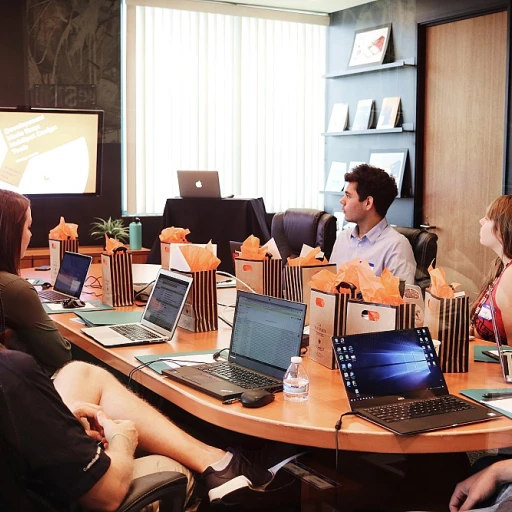
Understanding the Importance of an Annual Learning Strategy
Recognizing the Value of a Structured Learning Approach
An annual learning strategy is integral to fostering a culture of continuous improvement and professional growth. This strategy serves not only educational institutions but also individual professionals aiming to enhance their skills in a structured manner. By acknowledging the importance of a well-planned learning environment, institutions and individuals can better support students and professionals in reaching their goals through effective learning experiences.
A coherent learning plan addresses skill development tailored to both the students and educators. It sets the stage for students to identify areas where they can improve, facilitating a more focused approach to education. Moreover, an annual learning strategy fosters an environment conducive to decision making, allowing students to find meaningful connections within the curriculum.
- Skill Development: Defined plans encourage teaching practices that enhance student learning outcomes and promote professional development.
- Structured Environment: A learning plan helps in establishing a conducive learning environment, laying the foundation for problem solving and creative thinking.
- Consistency: An annual approach ensures consistency in teaching strategies, which translates to optimized learning support for students.
Implementing a strategy that includes regular assessment, feedback, and reflection allows both students and educators to refine their methods and approaches. To further understand how structured learning impacts professional mentoring, explore our comprehensive guide on evaluating learning strategies in mentoring.
Identifying Key Learning Objectives
Pinpointing Core Learning Goals
Identifying key learning objectives is a pivotal step in crafting an effective annual learning plan. A clear understanding of these objectives will provide direction and purpose, essential for boosting both professional growth and student learning experiences. Focused learning objectives serve as the backbone of your development strategy, enabling you to set realistic and achievable annual goals. To pinpoint core objectives:- Begin by reflecting on your current skill set and identify areas for skill development and enhancement.
- Consider the broader curriculum and classroom needs. What teaching practices require improvement to enhance student learning?
- For students, recognize which skills are most critical for their success. This may include problem-solving abilities, decision-making skills, or subject-specific competencies.
- Assess your past achievements and challenges to highlight where you can build upon strengths or address gaps.
Designing a Personalized Learning Path
Crafting a Learning Path Unique to Your Needs
Creating a personalized learning path is a crucial step in developing an effective annual learning strategy. It ensures that the learning experiences are tailored to meet individual goals and enhance skill development, whether it’s for students or professionals. Here's how to design a path that supports your growth:- Set Clear Objectives: Begin by identifying specific learning objectives you aim to achieve. This serves as the foundation for all subsequent planning efforts and will help to shape your overall strategy. Think about both the short-term and long-term goals you want to achieve, and how they align with your professional growth or academic progress.
- Understand Your Learning Style: Knowing whether you learn best through visual, auditory, or kinesthetic means can guide the way you structure your learning path. Tailor your curriculum to incorporate teaching practices that resonate most with your style, thereby making your plan more effective.
- Incorporate Real-World Applications: Learning is most effective when tied to real-world scenarios. Utilize problem solving and decision making in these scenarios to integrate lessons into daily applications. This enhances understanding and helps embed the learning into practical use.
- Utilize Available Resources: Harness a variety of resources to support your learning path. From online platforms to classroom-based learning and professional mentoring, employing the best practices will improve student and professional learning experiences. Effective strategies are essential to this process.
- Review and Adjust Regularly: Your learning path should be a living document. Evaluating progress and making necessary adjustments is critical for continued development. Regular reviews help identify areas needing improvement, ensuring your plan remains aligned with changing needs and new opportunities.
Incorporating Feedback and Reflection
Embracing Feedback Within Your Learning Strategy
Feedback plays a critical role in shaping an effective annual learning strategy. It is not just about evaluating what has been taught; it is about understanding what students have learned and how they have progressed. The implementation of regular feedback mechanisms in your learning plan can significantly enhance both student learning and professional growth. This involves a dynamic process where the student and professional focus on identifying areas of improvement and setting realistic goals.
Incorporating feedback and reflection into your strategy helps students identify areas where they need to improve. Moreover, it aids in honing problem solving and decision-making skills, which are essential in a rapidly changing professional landscape. By fostering an environment where constructive criticism is utilized wisely, students will gain a deeper understanding of their subject matter and enhance their skill development in meaningful ways.
Reflection: A Tool for Continuous Improvement
Reflection is paramount when designing a personalized learning path. Reflective teaching practices encourage students and educators to think critically about their curriculum, lesson planning, and overall teaching approaches. As you craft your learning plan, consider strategies that integrate reflective activities, allowing all parties to engage in candid self-assessment.
An enriched learning environment is one where feedback and reflection come together to create powerful learning experiences. By leveraging these tools, you can optimize the learning support system, ensuring the development plan remains relevant and effective.
Building a Support System for Feedback Implementation
The support system in place for executing feedback-related strategies is vital. An effective learning support system should be able to address the diverse needs of students and professionals alike. This includes accessing a wealth of resources, engaging with professional learning communities, and participating in ongoing development opportunities.
To further enhance student outcomes, it is crucial to consider best practices regarding learning strategies. By continually refining these practices, educators and students alike can achieve their educational and professional objectives more efficiently. Regular assessment and adaptation of the learning plan are essential to maintaining its efficacy.
Leveraging Resources and Opportunities
Maximizing Resources to Amplify Learning Impact
To achieve an effective learning plan, leveraging the best resources and opportunities is essential. A strategic approach to utilizing available tools and experiences can significantly enhance student learning and skill development, providing robust support for students and professionals alike.- Diverse Learning Materials: Incorporating a variety of teaching resources can lead to a more enriched learning environment. This includes digital platforms, open-access content, and interactive modules that align with curriculum goals.
- Mentorship and Collaboration: Access to mentorship is a vital component. Engaging with peers and experienced professionals can offer insights into best practices, teaching strategies, and lesson planning that improve student engagement and understanding.
- Professional Learning Communities: Joining professional groups or forums can offer extensive learning support. These communities foster a culture of sharing knowledge, which can be instrumental in identifying areas for professional growth and effective teaching practices.
- Skill Development Workshops: Attend workshops or training sessions that focus on enhancing teaching skills and decision-making processes. These workshops provide opportunities to learn new strategies and apply them in classroom settings, ultimately supporting skill enhancement.
- Feedback Mechanisms: Utilizing feedback from students and colleagues will aid in refining teaching methods and enhancing professional development. Constructive feedback promotes a deeper understanding of teaching effectiveness and encourages ongoing improvement.












